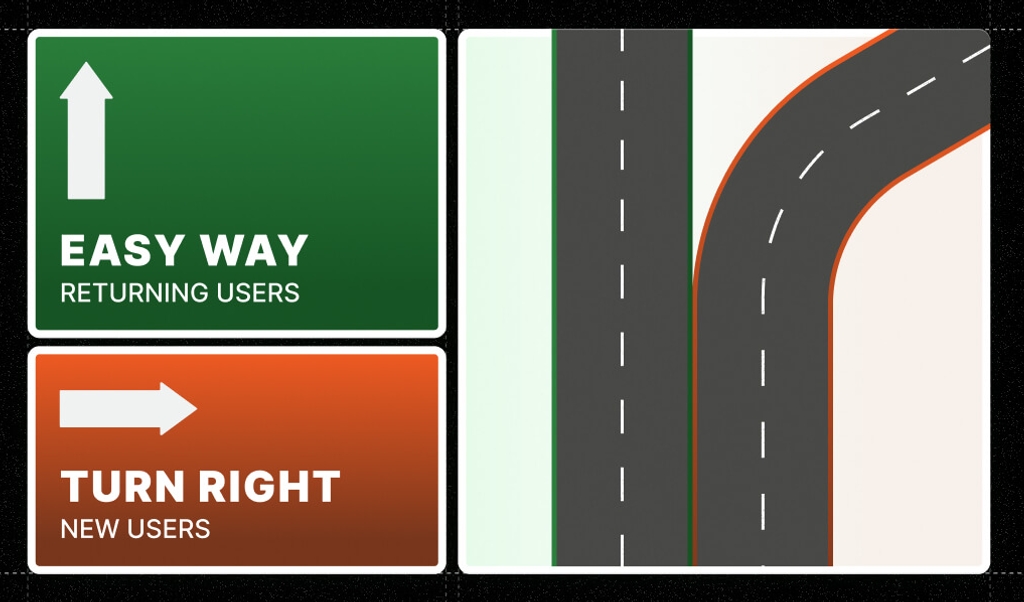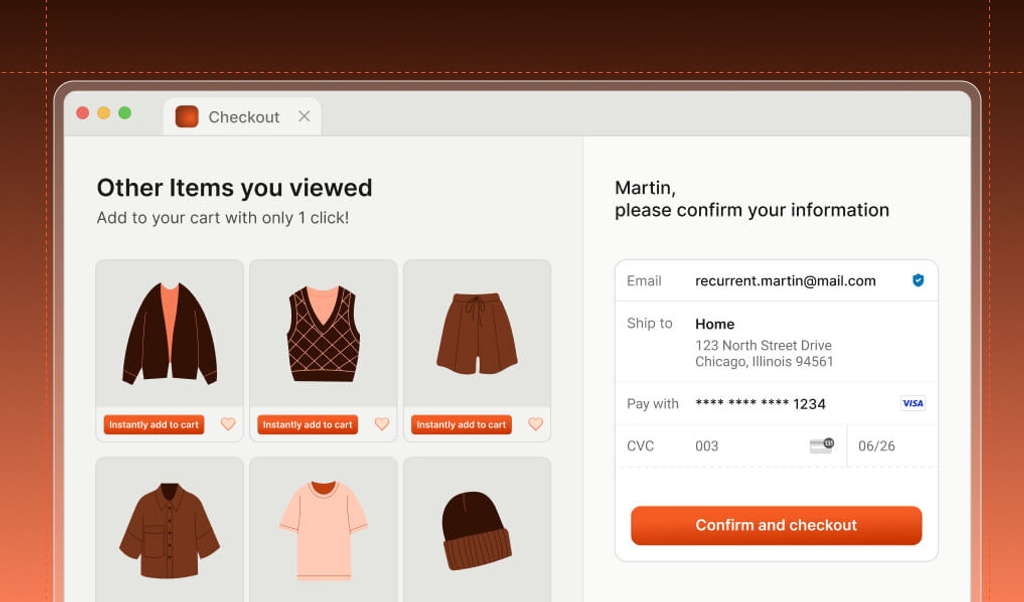
Summarize this article with
B2B SaaS products live in a complicated ecosystem of interconnected, overlapping, and sometimes conflicting services and practices. With today’s workers using over a dozen apps a day on average, you have an opportunity to stand out by making them feel welcome every time they come back to your app.
A great returning user experience (RUX) makes each visit more useful and efficient by recognizing when a user comes back and using details from their prior interactions to improve and personalize your product for them. Here’s how to do it for B2B SaaS.
Why the returning user experience matters in B2B SaaS
For B2B SaaS platforms, optimizing RUX is an important lever that can drive retention, reduce churn, and maximize the lifetime value of each customer. If end users find your software simpler to access and personalized to their needs, they’re more likely to adopt it quickly and use it regularly — and make it easier for the buyers and admins who ultimately make the call on renewal. For businesses that serve multiple personas, a robust RUX strategy makes sure every role's needs are met, increasing their engagement and even improving product loyalty.
Bad RUX can lead to customer frustration and churn, which can have a big impact on bottom lines. Customer acquisition costs (CAC) are very high for SaaS, ranging from $5,200 to over $10,000 for enterprise companies, depending on the industry. Retention is 5 to 25 times cheaper than acquisition, says Harvard Business Review. So it’s a good idea to pay some more attention to retention by focusing more on RUX.
How you can improve the returning user experience for B2B SaaS
With so many platforms available to users, it’s important to continue to provide value and make your service an easy choice. One way to do this is by recognizing them when they return to your site, and then adapting your platform to their needs.
Minimize login friction
By optimizing RUX, enterprises can provide a faster, frictionless login process while still maintaining account security for users. For example, when you can recognize a returning visitor, you could highlight the sign-in option they used last, or allow them to skip additional verification steps like one-time passwords or other multifactor (MFA) prompts so they can log in faster.
Preserve user progress and personalize experiences
Fine-grained statefulness in your product, such as preserving the progress in a half-completed workflow, helps users avoid redoing some of the work they previously did in another session. You can also automatically restore last-used settings, such as filters and sort options on a given table, or even anticipate how a user will want to arrange a certain view based on what you know about their behavior.
Additionally, with RUX, you can present valuable information and customize your product to their preferences. For instance, you can welcome them by name, invite them to check out a new feature that launched since their last visit, or offer quick access to a common workflow.
Design for multiple personas
Many B2B SaaS solutions serve multiple types of roles, which all need different things from them, so returning users should be presented with appropriate content, workflows, and visuals. For instance, with expense reporting, employees, managers, and bookkeepers all use the platform quite differently. A smart RUX will show each of them something different, with tailored interfaces and entry points.
Risks of ignoring the returning user experience
We’ve all experienced frustrating workflows: Log in, enter a one-time password, click five links to get to the right tool, adjust the sorting, filter out unnecessary data points, and so on.
If it’s harder for people to get in the groove of working with your software, they’ll end up using it as little as possible and grumble when they have to.
That frustration can lead directly to churn. Unhappy users, even if they’re not the buyers themselves, can directly impact your bottom line. If people don’t use your product, or don’t like using it, these opinions will filter upward, and the company will be a lot more likely to ditch it when the annual contract is up for renewal (or even sooner if it’s really bad).
Services with lower switching costs are particularly prone to being swapped out in response to user complaints. If you can’t lock in through complex integrations or proprietary algorithms, a good RUX could make a big difference in making everyday users feel positively attached to your service.
How device intelligence makes good RUX possible
You can improve your existing RUX strategy by identifying returning visitors with high accuracy. For many sites this means using accounts after login to handle optimization.
But what about before login or users browsing in incognito mode?
Device intelligence is the best way to identify unique devices, and the right platform can be more reliable than using cookies or IP addresses to recognize returning visitors. This technology allows you to recognize a user’s browser or device as soon as it arrives, even before logging in. By using device intelligence, which collates browser, device, and network signals to distinguish one visitor from another, you can associate a particular browser instance or mobile device to an account. This gives you more control to positively identify users — even if they’re on a VPN.
Identify all visitors with high accuracy using Fingerprint
At Fingerprint, we focus on identifying returning visitors with industry-leading accuracy. We identified more than four billion unique devices in 2024, and we use 100+ signals to establish and assign each device or browser that visits your site or mobile app a unique ID number that can remain stable for months or even years. It persists even when customers visit using incognito mode, clear cookies, or use a VPN. And on top of recognizing legitimate users, our device intelligence can help you keep out fraudsters and malicious bots.
Supported with device intelligence, a thorough RUX strategy can make your B2B SaaS platform feel more welcoming and easier to use, making renewal a lot more likely.
If you’re interested in learning more, you can try it for free, get in touch with us, or watch our webinar on optimizing RUX.



